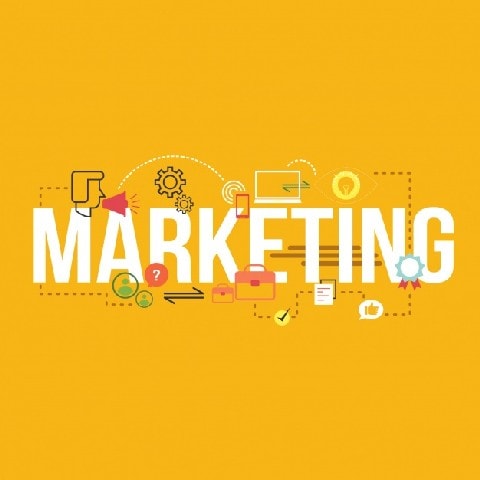Marketing is more than just advertising your products or services; it is essential to the growth of your business. Managing marketing information, offering financial solutions, managing goods and services, setting prices, making promotions, making sales, and organizing distribution are the seven main marketing tasks that your team needs to do.
To work in marketing, you must understand these seven tasks. Each task is an important part of the marketing cycle that shows how marketers help businesses grow. As a marketing worker, knowing how to use these features helps you understand your industry, make powerful marketing plans, and build your brand.
In this post, we will talk about the seven marketing roles and what they mean.
Table of Contents
What are marketing functions?
Marketing activities are important for everything that marketing professionals and experts do. The tasks and responsibilities that come with these jobs help the marketing team plan, set up, and run effective campaigns. Seven major marketing roles are known for making marketing efforts successful:
- Promotion
- Selling
- Product management
- Pricing
- Marketing and information management
- Financing
- Distribution
What are the 7 functions of marketing?
The tasks that go into marketing are often done behind the scenes, but they are what make a business’s marketing efforts work. They help people make strategic choices that align with the company’s goals. Each function plays a different part in the marketing process and adds something different.
1. Promotion: This involves creating awareness for a product or service through various channels to boost sales.
2. Selling: Selling refers to the actual transaction where the customer purchases the product or service.
3. Product Management: It involves handling the various aspects of a product, including design, development, and support.
4. Pricing: This function sets a competitive price for a product or service.
5. Marketing Information Management: This involves gathering, analyzing, and managing market information to make informed marketing decisions.
6. Financing: This function provides customers with various product or service options.
7. Distribution: This involves ensuring that products or services reach the consumer most efficiently.
Let’s understand these in detail and learn how a marketing department should use them in their marketing campaigns –
1. Promotion
Product development aims to boost sales. Discounts are a good short-term sales marketing strategy. Long-term advertising is essential. Coupons, rebates, price bundles, premiums, sweepstakes, product demos, and warranties are promotional strategies that will likely persuade buyers.
Advertising is art. Ads sell a solution, not product information. Ads inform, persuade, recall, or reinforce purchases. New product ads must be reported. Please notify them about old products. Sales might increase with announcements and incentives.
Some of the tactics that you can use for promotion are:
- Content marketing
- Email marketing
- Affiliate marketing
- Social media advertising
- Paid search campaigns
- Coupon and loyalty programs
2. Selling
Selling entails educating prospective customers and convincing them to buy. Successful selling entails finding the target market, gaining consumer attention, generating a demand for the product, encouraging customers to buy, closing the sale, and following up.
Meanwhile, a competent sales force should always be available and knowledgeable about the product, its features, and benefits. Customer service should provide information, fix problems, and offer advice as needed.
Selling can involve online retailers, retail outlets, direct customer interaction via email or phone, and digital marketing platforms like Facebook ads.
3. Product Management
Product management is crucial to marketing. Researching, designing, creating, and managing product production and distribution. Product managers oversee the full product life cycle, from idea to launch to promotion and user feedback analysis.
Product management’s major goal is to satisfy customers’ needs with products. This includes identifying consumer needs, developing product specifications, managing development, pricing the product to maximize profit, and planning product promotion and marketing methods.
Product management is complex and requires a team. Marketing requires collaboration with other departments to generate effective goods. They must work with engineers, designers, finance specialists, and others to achieve client expectations.
4. Pricing
The product price is the amount a buyer must pay. Product demand is heavily influenced by pricing. Charging too little boosts sales but earns little. Too much loading might cost customers and sales.
Marketing must balance prices and profitability with competition, globalization, and customer knowledge. Customer perception of product value determines the appropriate price, and pricing also requires market study and competitor analysis.
Product and pricing strategy should consider production, delivery, market conditions, consumer needs, and competition. The pricing approach incorporates special occasions and customer discounts. Loyalty, seasonal, and bulk discounts exist. The company’s price approach must match its marketing mix and brand image.
5. Marketing Information Management
Marketing information management involves decision-making utilizing marketing data. Customer, competitor, and market information help companies boost sales and profits. Marketers can use this data to understand customers’ requirements, preferences, behavior, and purchase intentions.
Marketers must correctly handle data to make better business decisions. This includes designing efficient data collection and processing systems, assessing customer behavior and trends, creating actionable plans based on insights, and developing strategies to assist firms in achieving their goals. It streamlines product and service management.
Tracking customer interactions over time helps marketers understand how customers react to campaigns and enhance future efforts. This data helps marketers improve consumer engagement and conversion rates.
6. Financing
Marketing companies need funding and budgeting. The organizational budget should cover advertising, market research, product development, production costs, staff wages, and more.
Marketers must know marketing costs to stay within budget. They must estimate campaign costs, allocate funding to activities, and track expenses periodically. Marketers must also comprehend how their decisions affect the company’s bottom line.
Marketers can optimize resource allocation and help companies stay profitable by knowing finance methods and budgeting.
7. Distribution
Distribution delivers goods and services to clients. Sales, shipping, returns, and other processes must be set up. Marketers must understand distribution networks to deliver their products and services to customers efficiently.
Physical distribution is important for marketing functions. It covers methods and practices for transporting goods from manufacturing to target client consumption points.
The key physical distribution marketing functions are warehouse, inventory, order processing, and transportation. Physical distribution organizes, manages, and channels critical elements to serve customers and achieve company goals.
Why are Marketing Functions Important?
Marketing is important for the growth of any business because it does many things. By knowing these roles and doing them correctly, marketers can create a good marketing plan to reach current and future customers, figure out market trends, generate advertising ideas, and manage budgets.
Ultimately, this helps businesses reach their objectives by adding value and attracting sales from the right people. Marketing functions are also necessary for marketing teams to create, carry out, and monitor a strong marketing plan that will help them reach the most people and get the desired results.
Marketers can make a plan to help their company succeed if they understand all seven marketing functions: managing products, setting prices, distributing goods, promoting them, managing ads and sales, conducting market research and development (R&D), and providing excellent customer service.
To create a brand voice that connects with the target group and builds relationships, marketers need to find and study key market trends, customer behavior, industry trends, and competitive information. By doing this, they can develop a good plan for getting the results they want from their company’s product or service in the market.
Now, in addition to the core marketing functions, let’s go through some of the additional functions upon which the marketing and sales team should focus –
10 Other Marketing Functions Marketers Should Know
Traditionally, the marketing functions involved exchange functions, storage, finance, risk management, transportation, grading, standardizing, labeling, packing, etc. However, marketing is a race without a finish line in this digital age of technology and information, where change outpaces generations. As a result, new functions of market information have attained far greater importance.
To bring you the facts and bust all the myths about the functions of marketing, ten additional functions of marketing are outlined as follows:
1. Market Research
It predominantly involves identifying consumers’ needs and wants. The aim is to generate adequate information regarding the particular ‘target’ market. The underlying principle is to understand customers.
Earlier, market research was focused on increasing sales rather than understanding customers. Over time, the need to understand the buyers was recognized. Perhaps this old Spanish saying exemplifies this new change:
“To be a bullfighter, you must first learn to be a bull.”
2. Marketing Planning
Marketing planning refers to the marketing strategies, techniques, and plans allowing the producer or the company to materialize its vision or objectives.
These objectives range from increasing market share to dominating the market. An ideal marketing plan imbues the confidence that the company will win the war even before fighting its first battle.
A marketing plan defines the company’s threats, opportunities, weaknesses, and strengths. Based on these, the policy sets goals and a time frame for achieving them. It also outlines the budget that would be required to achieve these goals.
Furthermore, it includes measures and review periods to gauge progress. The most important part, however, is implementing the plan. Marketing plans will not yield any returns if they are not implemented.
3. Product Designing and Development
The development of a product is based on the results of market research. A product is developed after marketing research and assessing what the consumers want. Other factors that play a role in the development of the product include potential costs, prevalent technology, etc.
Designing, on the other hand, facilitates development. It provides tools and concepts for developing successful products and services.
Product design focuses on various attributes of the potential outcome. These include being easy to assemble, easy to use, easy to repair, and easy to dispose of. The design also provides a competitive advantage in the market.
4. Grading and Standardization
Standardization means producing goods of predetermined standards. Uniformity is necessary for agricultural and manufactured products.
Standardization ensures that all the articles of a given product are homogeneous and uniform. It is essential for gaining buyers’ trust and assuring them of the product’s quality, price, and packaging. Conformity to a quality standard ensures consumer allegiance, sustained growth, and earnings.
Conversely, grading means sorting the supply of a given commodity as per specified or fixed norms or standards. These include classifying based on quality, size, quantity, etc.
5. Packaging and Labeling
The package and label cast the first impression on the buyer. In addition to protecting the goods from deterioration and damage, they act as promotional tools.
Packaging is often called the fifth P, an addition to the marketing mix of the four Ps—product, price, place, and promotion. It is often called “advertising on the shelf.”
6. Exchange Functions
One of the highly significant marketing functions is the exchange functions, which revolve around buy-and-sell relations.
Exchange functions help ensure the company’s offerings are present in the market per its requirements. The adept functionality of exchange functions of buying and selling channels demand and supply chain management.
7. Branding
Coca-Cola, FedEx, and Porsche are brands, and their establishment as top-rated brands is based on their effective branding based on their unique features, market credibility, reach, and advertising.
So, branding means-
We are giving the product a brand name to create a distinct identity vis-a-vis competitor’s products or substitutes. Branding creates meaning, association, market presence, and long-lasting credibility.
A successful brand adds further resonance to the product or service. The measure of a good brand is how much preference it commands. For instance, Apple users rarely switch to other brands.
8. Customer Satisfaction and Service
This is again one of the crucial functions of marketing, which takes a business’s presence in its target base to the next level. Customers are the essential market factors, making Customer Support Service the most significant function of any marketing campaign. Customer support service resolves all customers’ issues in the most personalized manner.
Different customer support services that are marketing functions include Sales Services, Technical Assistance, Managing Customer Complaints, Maintenance Services, Credit Facilities, and so on.
Offering customized support to customers helps a business create a satisfied customer base, which has to be the most significant factor in today’s cutthroat competition, where hijacking competitors’ customers are quite prevalent. It also increases the repeat value of your brand, and customers will opt for purchases repeatedly from you.
9. Transportation
We just discussed transportation as the 11th function of marketing. Still, it is significant enough to consider it one of the most crucial marketing tasks in the 12th position.
Transportation is essential because creativity, production, marketing, storage, sales, and transportation cannot occur in the same place, and they have to happen separately in a well-organized, scheduled, and channelized fashion.
Proper transportation allows businesses to reach their marketed products and services’ target audience efficiently. Businesses use different means and carriers to achieve this, making transportation one of the most crucial functions of marketing.
10. Storage or Warehousing
Again, This is one of the critical marketing features under the distribution subset (part of sales management). Storage or warehousing is quite essential and needs separate coverage as well.
A time gap exists when a company manufactures a product and plans to market it so potential customers can buy it. That is why storing goods in the right place for this time interval is essential. Godowns are one of the most famous examples of storage marketing functions.
Marketing managers must pay attention to a warehouse-related marketing function so their stock is always ready when customers purchase different products and services.
Conclusion
Marketing also performs social functions. Modern businesses thrive at the intersection of the economy and society, so the social dimension of marketing cannot be ignored. Companies are responsible for their employees, the community, and society. For example, increasing responsibility towards the environment, fair working conditions for employees, and a reasonable return on shareholders’ investment are some areas through which businesses can make healthy interventions in society.
All in all, marketing revolves around all those functions related to product innovation, creation, development, lead generation, market penetration, product management, conversions, etc. What are your thoughts about the functions mentioned above in marketing? Did we miss any of the critical marketing functions in this post? Please share your views with us in the comments below.
Liked this post? Check out the complete series on Marketing












I have to sell my book and if i want to sell more than more, then there is a distribution system for it so that i can sell my big books.
I asked this before and I will ask again what’s Aquafina Pepsi working together to advertise energetic drinks